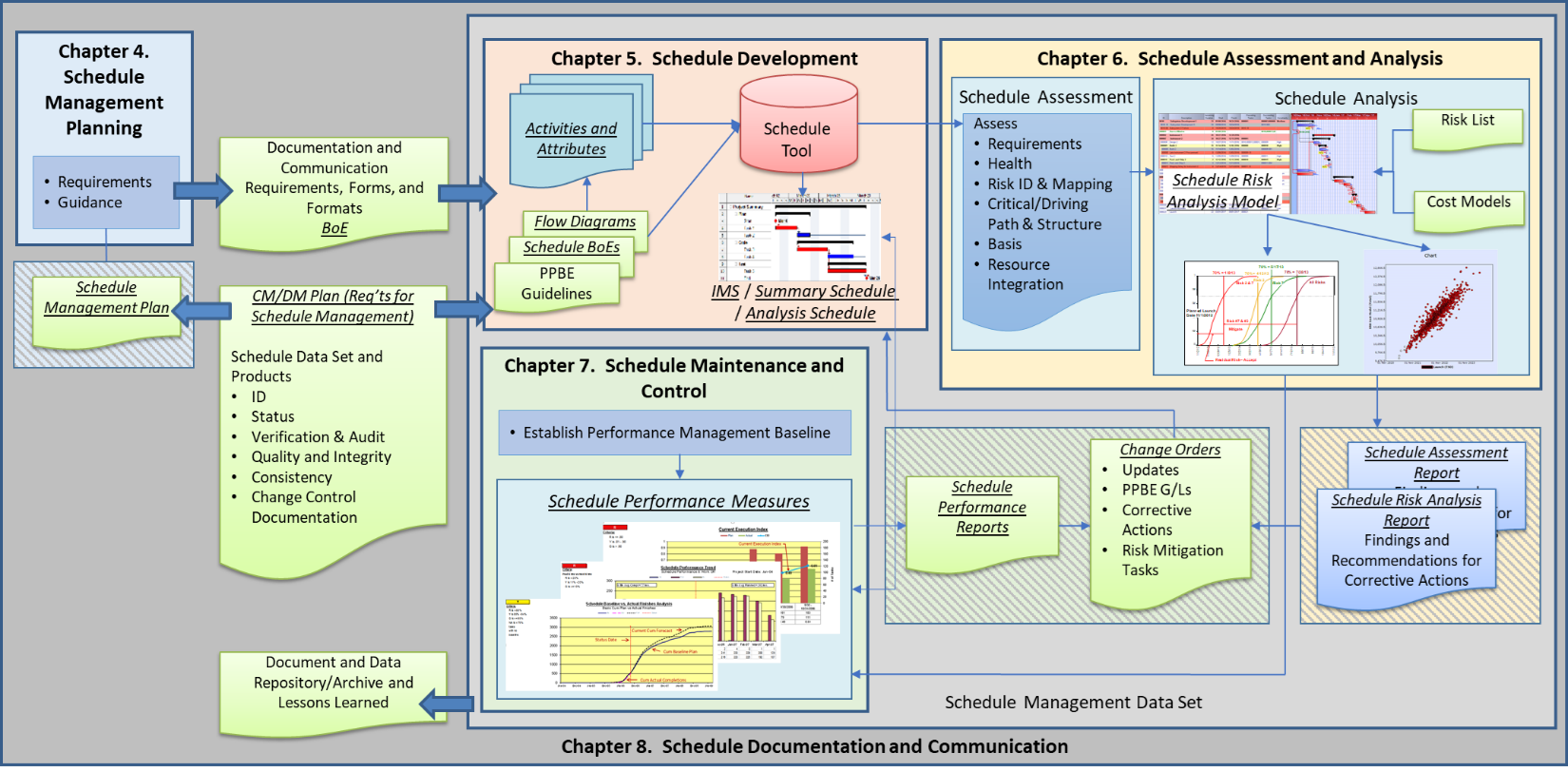Schedule Management Overview
NASA requires specific types of Programs and projects (P/p) to execute the Schedule Management function. While not required in totality for execution by some types of small-scale projects, it is strongly encouraged as a proven management practice that increases effectivity and efficiency of P/p performance. The Schedule Management function is illustrated by the framework shown in the figure below that comprises the following sub-functions:
Schedule Management Planning: The design, development and implementation of all Schedule Management processes, tools, reporting forms, and formats.
Schedule Development: Initiated early in formulation of a P/p with the objective to develop the Schedule Basis of Estimate (BoE) and the Integrated Master Schedule (IMS), as well as to define, develop, and deploy a scheduling capability that can export specific outputs as required for the other Schedule Management sub-functions.
Schedule Assessment and Schedule Analysis: Initiated early in formulation and utilized routinely to determine the validity and integrity of the schedule, and evaluating the magnitude, impact, and significance of P/p uncertainties and risks associated with meeting P/p and Agency commitments.
Schedule Maintenance and Control: The routine updating of progress, the tracking and monitoring of schedule performance, and the execution of corrective actions as determined from the Schedule Performance Measures needed for schedule baseline control to maintain internal and external commitments.
Schedule Documentation and Communication: The recording and dissemination of schedule information and required products at varying levels of maturity, using established configuration and data management (CM/DM) processes, as well as communication aids and tools throughout the P/p life cycle.

Comprehensive Schedule Management requires the establishment, utilization, and control of a baseline IMS, including its derivative schedules. The IMS constitutes the framework for time phasing and coordinating all P/p efforts into a master plan to ensure that objectives are accomplished within approved commitments. Thus, the sound, integrated, logic network-constructed schedule, developed using the Critical Path Method (CPM), serves the basis for planning and performance, and is the primary source for all schedule data provided to management for critical P/p decisions.


























